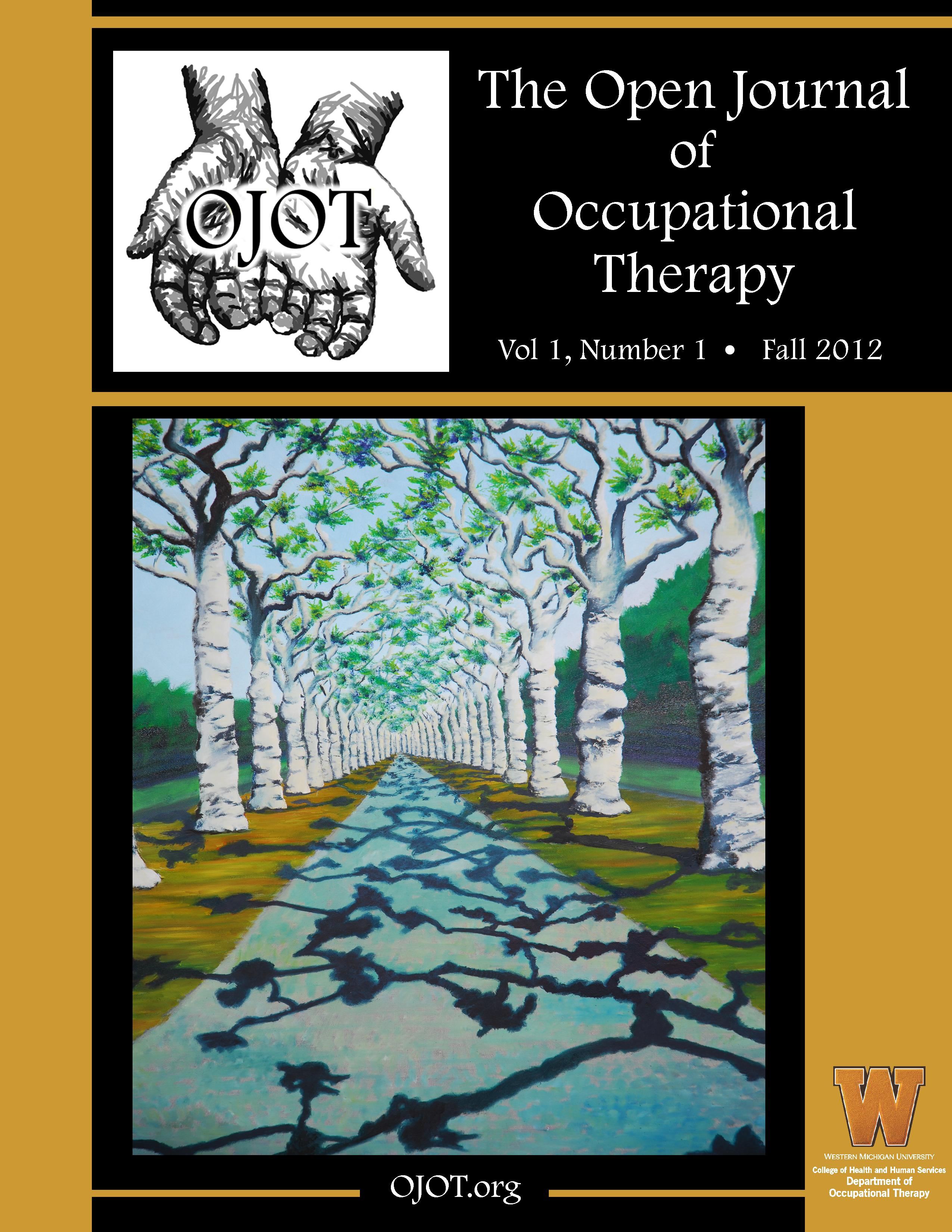ScholarWorks > HHS > OT > OJOT > Vol. 8 > Iss. 2 (2020)
Credentials Display
Beth Ann Walker, PhD, MS, OTR
Kasey Otte, Kelsey Lemond, Pamela Hess, Kandyse Kaizer, Tori Faulkner, and Davis Christy (OTD, May 2020)
Abstract
Background: The occupational therapy profession needs a framework to guide understanding of the occupational nature of sexuality and intimacy, assessment, intervention design, and measurement of outcomes. This study aimed to define the occupational nature of sexuality and intimacy and develop a theoretical and occupation-based screen, in-depth self-assessment, and performance measure.
Method: The Occupational Performance Inventory of Sexuality and Intimacy (OPISI) was developed following DeVellis’s (2017) guidelines for scale development that involved mapping the construct, generating an item pool, determining the format for measurement, and reviewing the initial item pool.
Results: The Occupational Therapy Sexual Assessment Framework (OTSAF) was developed to define the occupational nature of sexuality and intimacy, depict how the theoretical constructs intertwine with the domain of occupational therapy, and guide scale development. The OPISI includes a self-screen, in-depth self-assessment, and an individualized measure to establish baseline performance and detect self-perceived change in ability, satisfaction, understanding, and confidence in skills and ability to improve occupational performance associated with sexuality and intimacy over time.
Conclusion: The OTSAF defines the occupational nature of sexuality and intimacy and informs the occupational therapy scope of practice. The OPISI includes theoretical and occupation-based tools to adequately screen, assess, and measure performance related to the complex occupational nature of sexuality and intimacy. Formal validation is needed prior to releasing the OPISI for clinical use.
Recommended Citation
Walker, B., Otte, K., LeMond, K., Hess, P., Kaizer, K., Faulkner, T., & Christy, D. (2020). Development of the Occupational Performance Inventory of Sexuality and Intimacy (OPISI): Phase One. The Open Journal of Occupational Therapy, 8(2), 1-18. https://doi.org/10.15453/2168-6408.1694



Comments
The authors report that that they have no conflicts of interest to disclose.